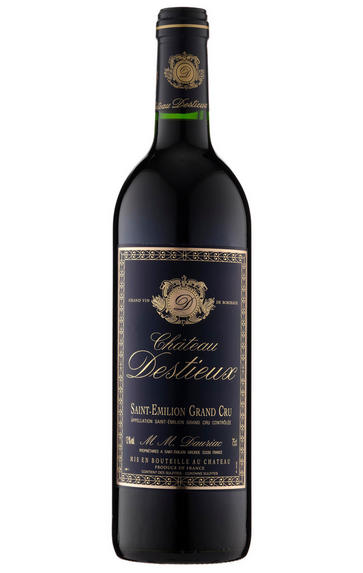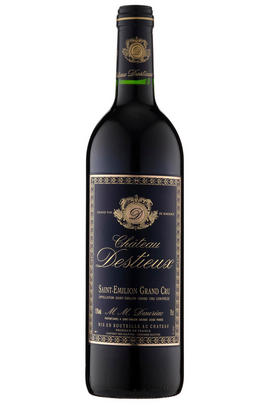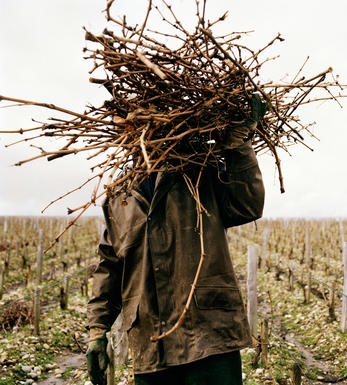
2009 Château Destieux, St Emilion, Bordeaux

Critics reviews
Robert Parker - Wine Advocate - April 2010
Robert Parker - Wine Advocate - April 2010
About this WINE

Chateau Destieux
Château Destieux is a Grand Cru Classé located in the wine appellation of Saint Emilion. The Chateaux is part of the Dauriac vineyards, owned by M. Dauriac, and also comprises the Château Montlisse Grand Cru in Saint-Emilion and the Château La Clémence in Pomerol.
The Château Destieux was bought by Mrs Dauriac, Christian Dauriac’s mother, the current vineyards owner.
The vineyards are planted with predominantly Merlot, as well as Cabernet Franc, and Cabernet Savignon and yields are kept low. The wines are matured in 100% new barrels.

St Émilion
St Émilion is one of Bordeaux's largest producing appellations, producing more wine than Listrac, Moulis, St Estèphe, Pauillac, St Julien and Margaux put together. St Emilion has been producing wine for longer than the Médoc but its lack of accessibility to Bordeaux's port and market-restricted exports to mainland Europe meant the region initially did not enjoy the commercial success that funded the great châteaux of the Left Bank.
St Émilion itself is the prettiest of Bordeaux's wine towns, perched on top of the steep limestone slopes upon which many of the region's finest vineyards are situated. However, more than half of the appellation's vineyards lie on the plain between the town and the Dordogne River on sandy, alluvial soils with a sprinkling of gravel.
Further diversity is added by a small, complex gravel bed to the north-east of the region on the border with Pomerol. Atypically for St Émilion, this allows Cabernet Franc and, to a lesser extent, Cabernet Sauvignon to prosper and defines the personality of the great wines such as Ch. Cheval Blanc.
In the early 1990s there was an explosion of experimentation and evolution, leading to the rise of the garagistes, producers of deeply-concentrated wines made in very small quantities and offered at high prices. The appellation is also surrounded by four satellite appellations, Montagne, Lussac, Puisseguin and St. Georges, which enjoy a family similarity but not the complexity of the best wines.
St Émilion was first officially classified in 1954, and is the most meritocratic classification system in Bordeaux, as it is regularly amended. The most recent revision of the classification was in 2012

Cabernet Sauvignon Blend
Cabernet Sauvignon lends itself particularly well in blends with Merlot. This is actually the archetypal Bordeaux blend, though in different proportions in the sub-regions and sometimes topped up with Cabernet Franc, Malbec, and Petit Verdot.
In the Médoc and Graves the percentage of Cabernet Sauvignon in the blend can range from 95% (Mouton-Rothschild) to as low as 40%. It is particularly suited to the dry, warm, free- draining, gravel-rich soils and is responsible for the redolent cassis characteristics as well as the depth of colour, tannic structure and pronounced acidity of Médoc wines. However 100% Cabernet Sauvignon wines can be slightly hollow-tasting in the middle palate and Merlot with its generous, fleshy fruit flavours acts as a perfect foil by filling in this cavity.
In St-Emilion and Pomerol, the blends are Merlot dominated as Cabernet Sauvignon can struggle to ripen there - when it is included, it adds structure and body to the wine. Sassicaia is the most famous Bordeaux blend in Italy and has spawned many imitations, whereby the blend is now firmly established in the New World and particularly in California and Australia.


Buying options
Add to wishlist
Description
A superb effort from Destieux, which has been on a relatively hot streak over recent vintages, the opaque blue/purple 2009 reveals an exquisite nose of incense, spring flowers, blueberries, black raspberries, charcoal, and background oak. Dense, corpulent, and full-bodied with abundant power as well as a skyscraper-like textural impression as well as lots of silkiness, glycerin, and richness, this big, powerful, quasi-modern-styled St.-Emilion can be drunk over the next 15-20 years.Tasted three times.
Robert Parker - Wine Advocate - April 2010
wine at a glance
Delivery and quality guarantee